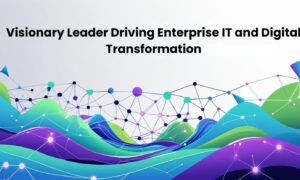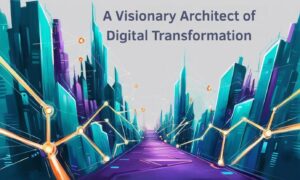The rapid advancement of technology has had a profound impact on various aspects of our lives, including the way we work. The digital transformation of work has revolutionized the workplace, leading to significant changes in how tasks are performed, how teams collaborate, and how businesses operate. In this article, we will explore the key ways in which technology is reshaping the workplace and discuss the implications of these changes.
1. Automation and Artificial Intelligence
One of the most significant impacts of the digital transformation of work is the rise of automation and artificial intelligence (AI). Automation refers to the use of technology to perform tasks that were previously done by humans, while AI involves the development of computer systems that can perform tasks that typically require human intelligence.
Automation and AI have the potential to streamline and optimize various processes in the workplace. For example, repetitive and mundane tasks can be automated, freeing up employees’ time to focus on more complex and creative work. This not only increases efficiency but also enhances job satisfaction by allowing employees to engage in more meaningful and fulfilling tasks.
Furthermore, AI-powered systems can analyze vast amounts of data and provide valuable insights, enabling businesses to make data-driven decisions. For instance, AI algorithms can analyze customer behavior patterns and preferences, helping businesses tailor their products and services to meet customer needs more effectively.
However, the rise of automation and AI also raises concerns about job displacement. As technology continues to advance, certain jobs may become obsolete, leading to unemployment or the need for workers to acquire new skills. It is crucial for businesses and policymakers to address these challenges by investing in retraining programs and creating new job opportunities that leverage the unique capabilities of humans and machines working together.
2. Remote Work and Virtual Collaboration
The digital transformation of work has also facilitated the rise of remote work and virtual collaboration. With the advent of high-speed internet and communication tools, employees can now work from anywhere in the world, breaking free from the constraints of traditional office spaces.
This shift towards remote work has numerous benefits for both employees and employers. For employees, it offers greater flexibility and work-life balance, as they can choose when and where to work. This can lead to increased productivity and job satisfaction. Employers, on the other hand, can tap into a global talent pool and reduce overhead costs associated with maintaining physical office spaces.
Virtual collaboration tools, such as video conferencing, project management software, and cloud-based document sharing, have also transformed the way teams work together. These tools enable seamless communication and collaboration across geographically dispersed teams, fostering innovation and efficiency.
However, remote work and virtual collaboration also present challenges. The lack of face-to-face interaction can hinder team bonding and trust-building. Additionally, the blurring of boundaries between work and personal life can lead to burnout if not managed effectively. Organizations need to establish clear communication channels, set expectations, and provide support to remote workers to ensure their well-being and productivity.
3. Gig Economy and Freelancing
The digital transformation of work has given rise to the gig economy, where individuals work on a project basis as independent contractors rather than being employed full-time by a single organization. Platforms such as Uber, Airbnb, and Upwork have facilitated the growth of the gig economy by connecting freelancers with clients.
The gig economy offers individuals the opportunity to have greater control over their work and schedule. They can choose the projects they want to work on, set their own rates, and enjoy the flexibility of working on their terms. This has attracted a significant number of workers, particularly millennials, who value autonomy and work-life balance.
For businesses, the gig economy provides access to a diverse pool of talent with specialized skills. They can tap into the expertise of freelancers on a project basis, without the need for long-term commitments or overhead costs associated with hiring full-time employees.
However, the gig economy also raises concerns about job security and workers’ rights. Freelancers often lack the benefits and protections that come with traditional employment, such as healthcare, retirement plans, and job stability. Policymakers need to address these challenges by creating regulations that protect the rights and well-being of gig workers while fostering innovation and flexibility.
4. Enhanced Connectivity and Communication
The digital transformation of work has significantly enhanced connectivity and communication in the workplace. With the proliferation of smartphones, laptops, and other connected devices, employees can stay connected and access work-related information anytime, anywhere.
Email, instant messaging, and video conferencing tools have become essential communication channels in the modern workplace. These tools enable real-time communication and collaboration, breaking down geographical barriers and facilitating global teamwork.
Furthermore, social media platforms and enterprise social networks have transformed internal communication within organizations. These platforms allow employees to share knowledge, collaborate on projects, and build relationships across departments and hierarchies.
Enhanced connectivity and communication have improved productivity and efficiency in the workplace. However, they also raise concerns about information overload and the blurring of work and personal boundaries. Organizations need to establish guidelines and policies to ensure that employees can effectively manage their digital presence and maintain a healthy work-life balance.
5. Upskilling and Lifelong Learning
The digital transformation of work has made continuous learning and upskilling essential for employees to stay relevant in the rapidly evolving job market. As technology advances, new skills and competencies are required to leverage the full potential of digital tools and systems.
Organizations need to invest in upskilling programs to ensure that their employees have the necessary skills to adapt to technological changes. This can involve providing training on emerging technologies, such as AI, data analytics, and cybersecurity. Additionally, fostering a culture of lifelong learning can empower employees to take ownership of their professional development and stay ahead of the curve.
Individuals also need to embrace a growth mindset and actively seek opportunities for upskilling. Online learning platforms, such as Coursera and Udemy, offer a wide range of courses and certifications that can be accessed anytime, anywhere. By continuously updating their skills, individuals can enhance their employability and adapt to the changing demands of the digital workplace.
Conclusion
The digital transformation of work has brought about significant changes in the workplace, reshaping the way tasks are performed, how teams collaborate, and how businesses operate. Automation and AI have the potential to streamline processes and enhance decision-making, while remote work and virtual collaboration offer flexibility and global talent access. The gig economy provides opportunities for autonomy and specialization, while enhanced connectivity and communication improve productivity. However, these changes also raise concerns about job displacement, worker rights, and information overload. Upskilling and lifelong learning have become essential for employees to thrive in the digital workplace. By embracing these changes and addressing the associated challenges, organizations and individuals can harness the full potential of technology and create a future of work that is both efficient and human-centric.



































